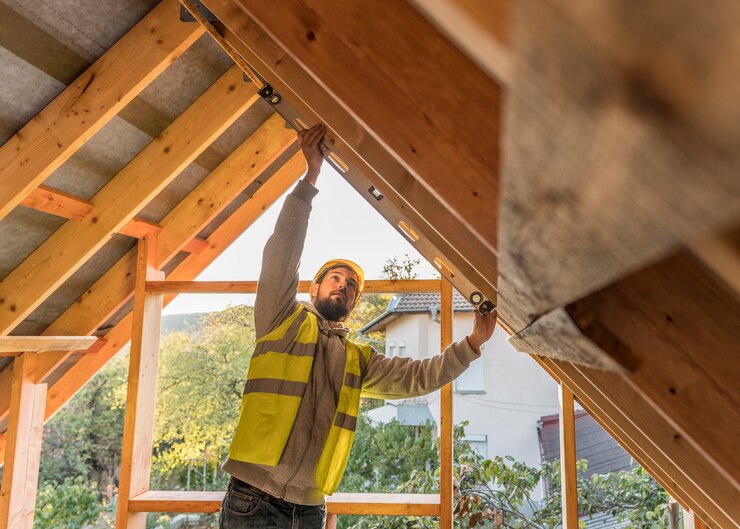The fierce Southern heat can feel overwhelming, and it’s not just you who feels it—your home does too! High temperatures can sneak through the cracks, turning your cozy indoor space into a sauna. The battle against this relentless heat doesn’t just leave us sweaty; it challenges how well our homes stay cool.
Insulation plays a silent but crucial role in this fight. It’s like armor for your home, keeping the inside comfy by blocking out the intense heat. When insulation falters, the heat barges in, turning every room into an oven. Understanding the impacts of Southern heat on your home and its insulation can help you win this battle, ensuring your living space remains the oasis you need.
The Science Behind Southern Heat and Its Impact on Homes
High temperatures in the South can heat up a home fast, and keeping it cool can be tricky. The sunlight beating down on rooftops raises indoor temperatures, and hot air seeps in through windows and doors, adding to the discomfort. Heat loves to travel, moving from warm areas to cooler ones, which is why your home’s insulation is vital.
Insulation acts like a barrier, limiting heat from sneaking inside. It works by reducing heat flow, keeping your living space cooler and more pleasant. Without good insulation, the fight against the Southern heat would be much tougher. When insulation performs well, it helps air conditioners work efficiently, saving energy and keeping indoor temperatures more even.
The challenges of Southern heat aren’t just about high temperatures. Humidity plays a role too. Hot, humid air can make insulation less effective, letting moisture creep in. This moisture can lead to bigger problems like mold and damage. That’s why understanding heat’s impact on home interiors and ensuring proper insulation is more crucial than ever. By tackling these challenges head-on, homeowners can enjoy a cool and cozy home all year long.
Identifying Heat-Related Insulation Problems
Spotting insulation troubles early can make a big difference in keeping your house cool. Signs of inadequate insulation in warm climates are sometimes easy to miss. Start by noticing frequent temperature changes between rooms. If some rooms are much warmer than others, the insulation may be uneven. Another hint is higher energy bills. If cooling is working harder, it may be due to heat getting in through the walls or ceiling.
Other common signs include drafts and walls that feel hot to the touch. Floors or ceilings that are warm during the day can also signal an issue. To check insulation, start with a simple walkthrough. Look for gaps or cracks in areas where walls meet windows and doors. Take note if you see damp spots or feel drafts that shouldn’t be there.
A more thorough check can be done by inspecting attics and crawlspaces. Ensure these areas are dry and the insulation blankets between rafters, pipes, and vents are intact. A simple way to test efficiency is by using an infrared thermometer. This gadget can measure different surface temperatures, showing where heat is sneaking in. Regular check-ups help catch problems early, making it easier to repair them before they turn into bigger, costlier issues.
Effective Insulation Methods for Hot Climates
Choosing the right insulation can make a big difference in handling Southern heat. Various materials work well in hot climates, each with unique features to consider. Fiberglass insulation is popular because it’s cost-effective and easy to install. However, it might not be as efficient at sealing gaps as other options.
Spray foam insulation stands out for its ability to create an airtight seal. This material expands when applied, filling cracks and crevices. It provides excellent thermal resistance, which helps keep indoor temperatures stable. Unlike fiberglass, spray foam doesn’t allow air or moisture to sneak in, making it a strong choice for humid Southern areas.
Cellulose insulation is another option, made from recycled paper products. It’s good for eco-conscious homeowners but can be less effective in humid conditions which might cause it to sag or clump. Reflective or radiant barriers can be used in addition to other insulation types. They reflect heat rather than absorb it, helping to cool attics and upper floors.
Considering the pros and cons of each type helps homeowners choose the best for their needs. Spray foam often offers the most comprehensive solution for battling the Southern heat, sealing homes tightly to keep them cool and comfy.
Tips for Maintaining Insulation Efficiency During Hot Months
Keeping insulation working at its best involves some easy maintenance steps. Simple actions can prevent heat from creeping in and keep energy bills down. Start by sealing gaps around windows and doors with weatherstripping or caulk. This step stops warm air from getting in and cool air from leaking out.
Regular inspections are key to spotting wear and tear before it becomes serious. Check attic floors, crawl spaces, and interior walls to ensure insulation is intact and free of moisture. Repair or replace any damaged insulation quickly to prevent bigger issues.
Proper ventilation is equally important, especially in attics. Good airflow prevents heat and moisture buildup. Make sure vents are clear of obstructions and consider installing fans to help circulate air.
Taking these preventative measures can ensure long-lasting insulation effectiveness. By maintaining your home’s insulation, you not only preserve its comfort but also protect it from the relentless Southern heat.
Conclusion
The battle against Southern heat begins with understanding how it sneaks into homes and disrupts comfort. Addressing this challenge requires effective insulation choices and vigilant upkeep. By recognizing insulation weaknesses and repairing them, homeowners can maintain a cool and pleasant indoor environment all year.
Don’t let the heat win. At Southern Twist Spray Foam, we specialize in high-quality insulation solutions that effectively tackle Southern climate challenges. Explore how our spray foam insulation contractor can help you keep your home cool and comfortable. Contact today to start enhancing your home’s defense against the heat.

